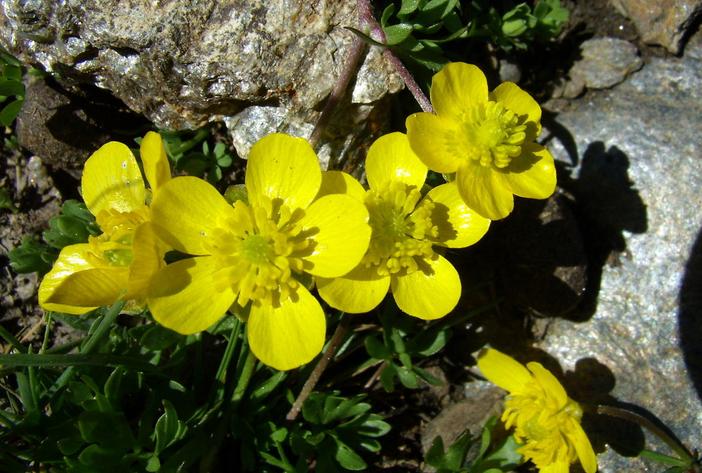Alpine Buttercup
(Ranunculus demissus)
Alpine Buttercup (Ranunculus demissus)
/
/

Por los caminos de Málaga
CC BY 2.0
Image By:
Por los caminos de Málaga
Recorded By:
Copyright:
CC BY 2.0
Copyright Notice:
Photo by: Por los caminos de Málaga | License Type: CC BY 2.0 | License URL: https://creativecommons.org/licenses/by/2.0/ | Uploader: Por los caminos de Málaga | Publisher: Flickr



Estimated Native Range
Summary
Ranunculus demissus, commonly known as the Alpine Buttercup, is a semi-deciduous perennial herb native to Spain, the Balkans and the Mediterranean region. It is often found in moist meadows, along stream banks, and in boggy areas. This species typically grows to a height and width of 0.5-1 feet (0.15-0.3 meters), forming a low mound of foliage. The leaves are deeply lobed, and the plant produces bright yellow, cup-shaped flowers that bloom in the spring and are moderately showy. The flowers are followed by small, dry fruits known as achenes.
The Alpine Buttercup is valued for its cheerful yellow flowers and its ability to thrive in cool, moist conditions, making it suitable for water gardens, bog gardens, and areas with similar conditions. It is also used in rock gardens and alpine plantings due to its compact size and preference for well-drained soils. In cultivation, it requires consistent moisture and can tolerate full sun to part shade. It is adaptable to a range of soil types, including sandy or loamy soils, as long as they are well-draining. While generally low-maintenance, Ranunculus demissus can be susceptible to powdery mildew and root rot if conditions are too wet or if there is poor air circulation. It is not known to be invasive when grown outside its native range.CC BY-SA 4.0
The Alpine Buttercup is valued for its cheerful yellow flowers and its ability to thrive in cool, moist conditions, making it suitable for water gardens, bog gardens, and areas with similar conditions. It is also used in rock gardens and alpine plantings due to its compact size and preference for well-drained soils. In cultivation, it requires consistent moisture and can tolerate full sun to part shade. It is adaptable to a range of soil types, including sandy or loamy soils, as long as they are well-draining. While generally low-maintenance, Ranunculus demissus can be susceptible to powdery mildew and root rot if conditions are too wet or if there is poor air circulation. It is not known to be invasive when grown outside its native range.CC BY-SA 4.0
Plant Description
- Plant Type:
- Height: 0.5-1 feet
- Width: 0.5-1 feet
- Growth Rate: Moderate
- Flower Color: Yellow
- Flowering Season: Spring
- Leaf Retention: Semi-deciduous
Growth Requirements
- Sun: Full Sun, Part Shade
- Water: Medium
- Drainage: Fast, Medium
Common Uses
Low Maintenance, Water Garden
Natural Habitat
Moist meadows, along stream banks, and in boggy areas within montane and subalpine regions of Australia, particularly in Tasmania
Other Names
Common Names:
Scientific Names: Ranunculus demissus , Ranunculus auricomus subsp. pseudopsis , Ranunculus demissus var. major , Ranunculus depressus , Ranunculus depressus , Ranunculus lapponicus , Ranunculus lapponicus , Ranunculus nivalis , Ranunculus polyrhizus , Ranunculus polyrhizus
GBIF Accepted Name: